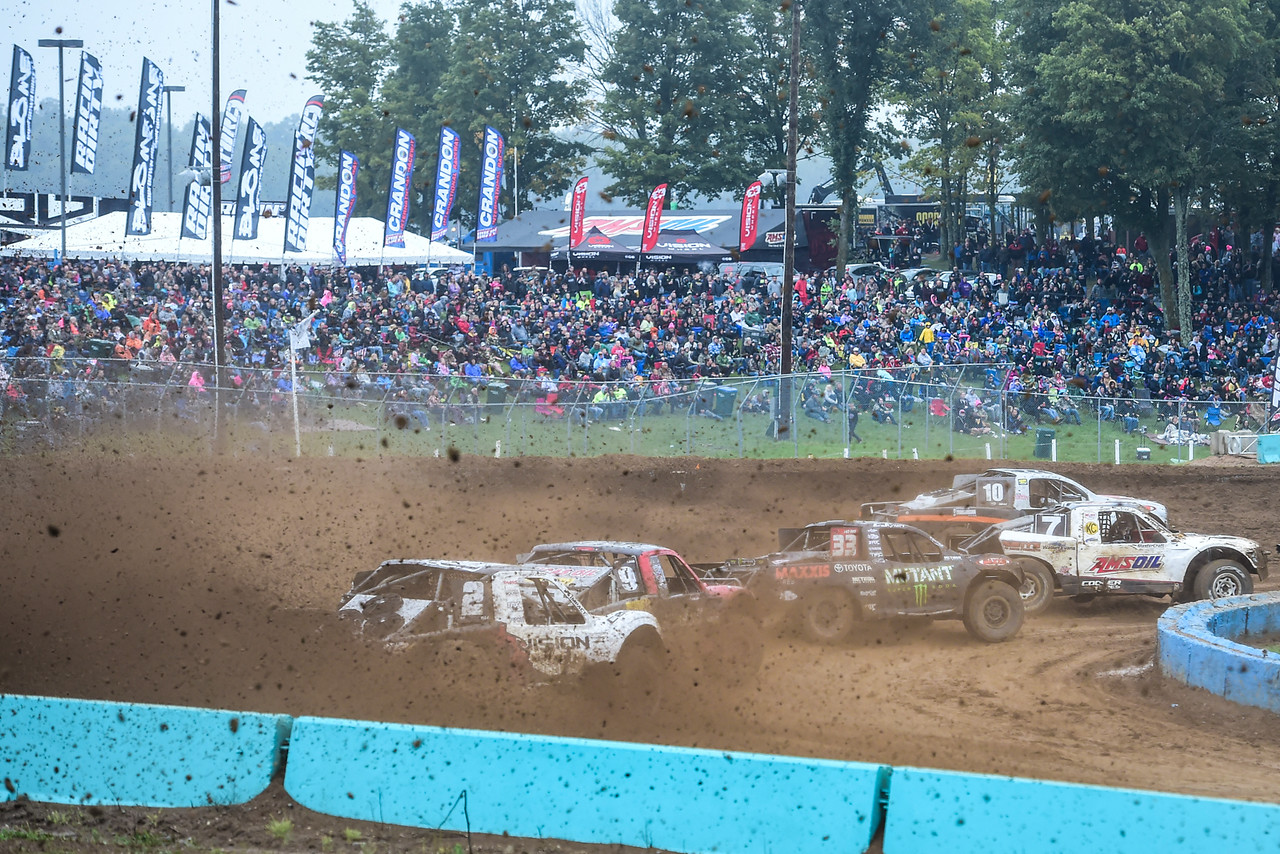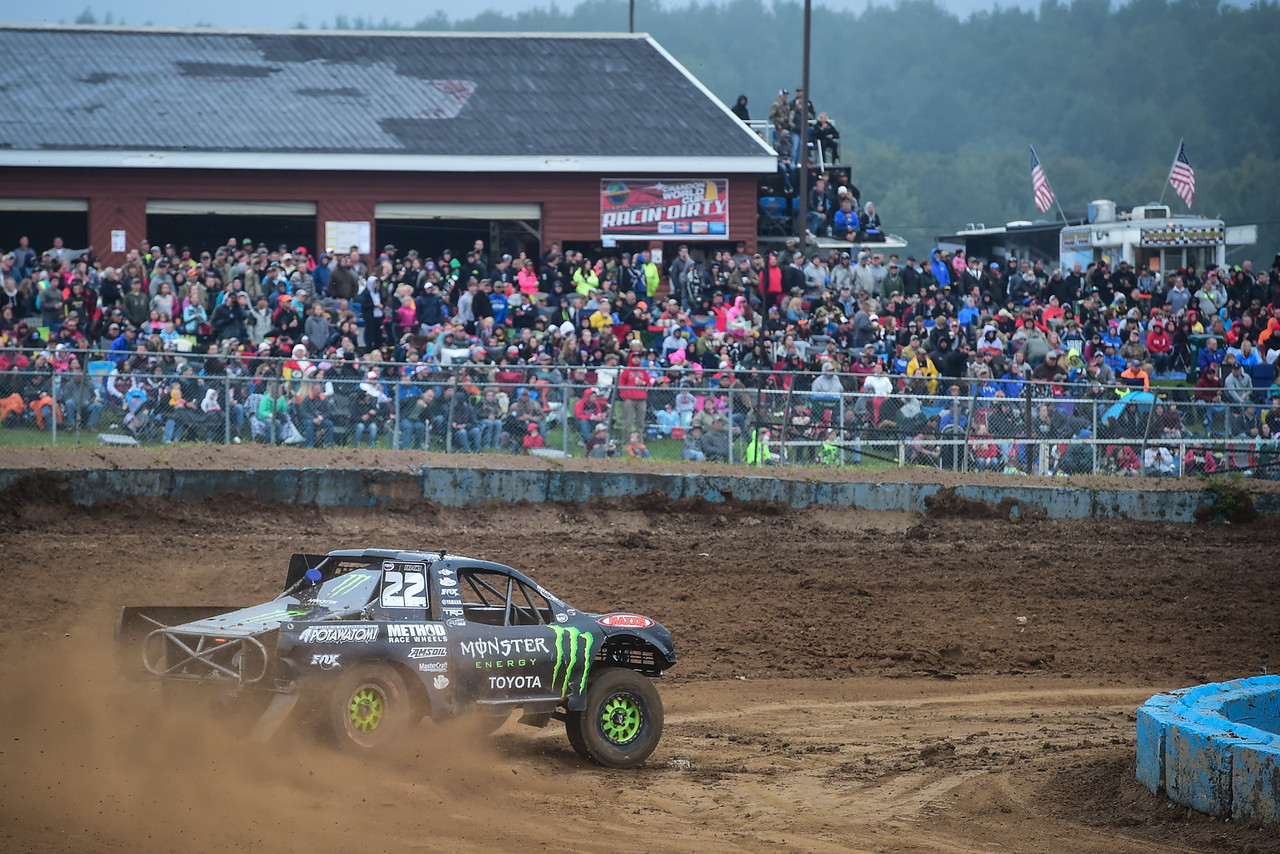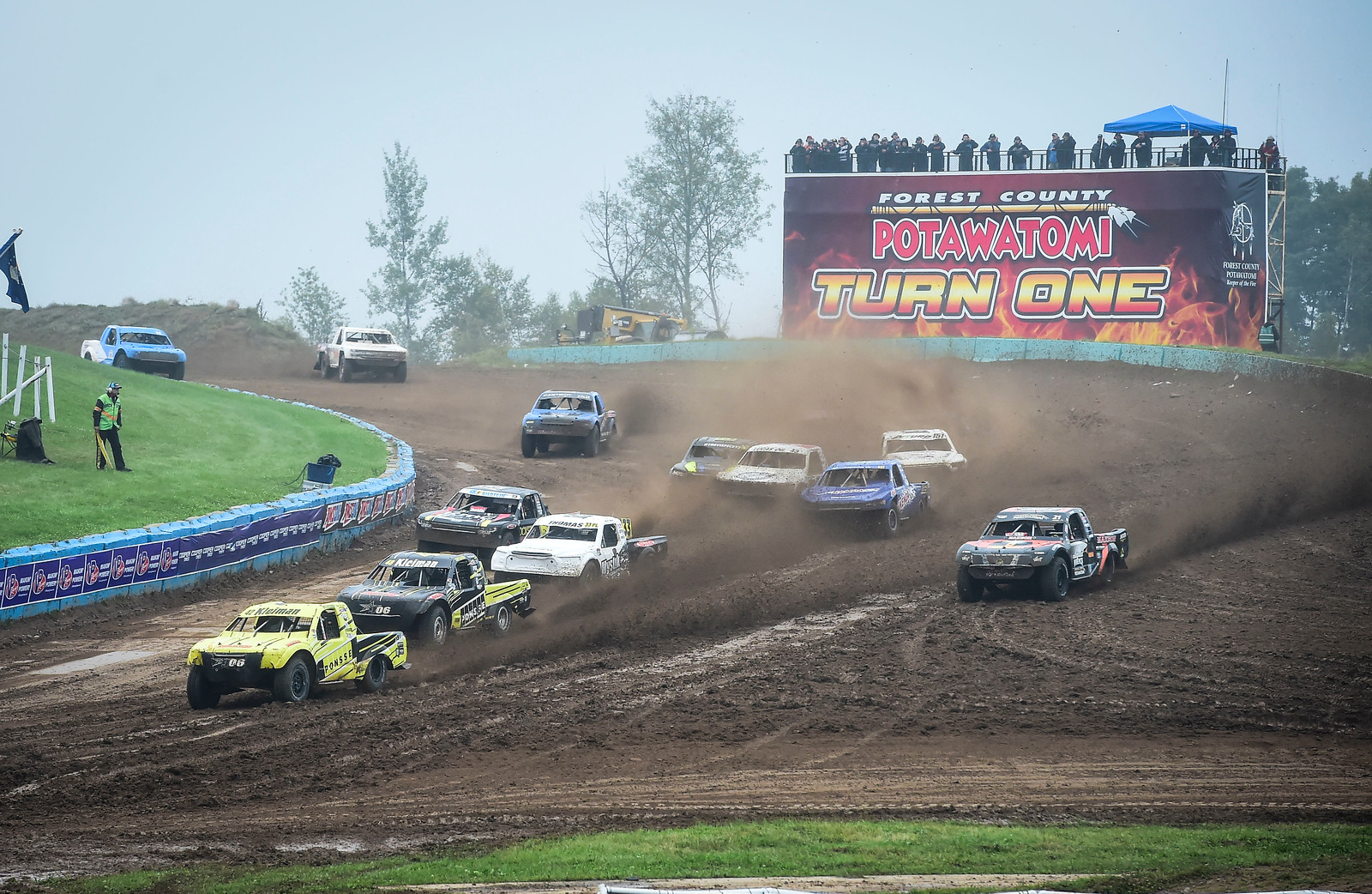In an age of four-strokes and full-time training facilities, motorhomes and bi-coastal living in two areas free from winter, motocross keeps getting more expensive. But I’ve covered other motorsports and I can thankfully say one thing: motocross still ain’t about the money.
Well, at least not like other motorsports. The old racing phrase “Speed costs money, how fast do you want to go?” lives on, but it’s only somewhat relevant with motocross bikes. Ultimately, over here, it’s still more about the rider than it is the bike. When I cover other motorsports events, I realize that with age comes a cage, but that cage requires a higher wage.
Because I’m contracted by NBC to announce Lucas Oil Pro Motocross, the network will also occasionally send me to other races. In 2015, I used a few off-weekends to cover NASCAR’s K&N Pro Series, its highest-level touring (or regional) championship. Teenaged talent uses the K&N races (along with the competing ARCA Series) to get discovered, kind of like a year-long Loretta’s. At my first race, Greenville-Pickens Speedway in South Carolina, the drivers talked about the old and weathered track surface just eating tires. Most said they cruise early, hang in the top five, save tires, then go for it late.
Then some kid named William Byron, in just his second race ever in the series, ruined that strategy by jumping up front early. Was he stupid? What about the tires? Well, Byron was so good he could save tires while going fast. He won the race, then he won the championship, as a rookie. Kyle Busch signed him for his NASCAR Camping World Truck Series team in 2016, and Byron probably would have won the title as a rookie if not for a freak engine failure. Dale Earnhardt Jr.’s Xfinity team picked him up this year, and he’s winning races again and in title contention. The biggest powerhouse in NASCAR, Hendrick Motorsports, has signed him for the top-level Monster Energy NASCAR Cup Series for 2018.
Byron is on the fastest of fast tracks. Everywhere he goes, he wins. But everywhere he goes, he runs the Liberty University logo. Kid has talent, but the kid also has a sponsor. That gets him on the best teams and in the best equipment. Byron is doing way too well for anyone to question his skill, but even with his incredible talent, he might not have gotten anywhere without the sponsor. This is simply how it works in car racing. Recently, I was told that a full season with a high-end team in that K&N series costs north of a half million dollars. So you better bring a sponsor, or deep pockets. Speed costs money.
NASCAR is trying to take steps to lessen this, even suggesting new engine rules in the top series that should reduce costs. The problem is you can’t reduce costs in racing. Tell a well-funded team they can’t spend money on engines and they’ll use that money somewhere else, like hiring more staff. They will find a way, because they want to win, and spending leads to winning.
On the dirt bike side, better bikes and technicians help (and spending money on trainers and facilities does, too), but ultimately a good rider can win on a bad bike and a good bike can’t win with a bad rider. The delta between rider and equipment is just wider here. In motocross, it’s the determination, health, and the talent of the rider first, everything else second.
There’s also risk. That’s the downside. Dirt bikes are a democratic form of racing—may the best man win—but injuries are a terrible, terrible side effect. Every form of racing has its upsides and downsides. Getting hurt is the low-side for dirt bikes. Second? The lack of parity, which is what happens in a sport that is so athlete dependent. Didn’t matter what anyone else tried—Jeremy McGrath was going to be hard to beat.
I got to see a new mix last weekend. I covered the biggest event in off-road truck racing, the Crandon World Cup. Crandon, Wisconsin, is the Daytona or Indianapolis of the off-road world. I’ve been to that race twice now, and it is superb. When those trucks hit a jump at 100 MPH and then throw it into a corner, it represents the greatest mashup of every form of motor racing, all right there in one straight and one turn. It is NASCAR, motocross, dirt track, road course, motocross, rally, drag racing, and monster trucks all in one. I love dirt bikes, but after you watch 100 triple jumps, you’re no longer blown away. You will never, ever turn away from the speed and fury of those Pro four-wheel-drive trucks nailing that corner, even if you see it 100,000 times.
Because of this, off-road truck racing appears poised to be the ultimate, and many people know this. The sport has tried for decades to break through, with a lot of people spending a lot of money promoting those races hoping that it clicks. There are popularity spikes, but it never quite gets there. The races are big, but NASCAR (or even supercross) levels of growth are still elusive.
I had a great weekend at Crandon, but I always end up thinking deeper. I love studying the technology of bikes, trucks, and cars, too (gearhead, bro) so I stared at a lot of trucks figuring out how they work. The more you look, the more you get pulled into that rabbit hole. Talent versus equipment. Some great drivers also have great trucks—that much is obvious when you see who wins. Bryce Menzies swept the day at Crandon, and while plenty want to tell you that his family has a lot of money (they do), bottom line is that in no sport can you completely mask ability—Menzies couldn’t win if he couldn’t drive. But the support and equipment is certainly part of the story, of course, just like it is with William Byron.
Combing the pits and results at the off-road races, you see some great drivers have only average trucks, and some average drivers have great trucks. It’s hard to pin it all down and figure out equipment versus talent. In the Pro Lite class, I noticed two brothers running up front consistently, so I assumed they had parents fronting some big-money equipment. Not so. I met Kyle and Cody Kleiman after the race, and they told me they work full-time in the logging industry during the week. When a truck breaks, they’re welding it back together themselves. They’re basically spending everything they have to do this, and then I met mom and dad and we joked about all the family vacation money being spent on racing. But dad used to race at Crandon, too. They don’t have deep pockets, but this is their life. Kyle leads the TORC Pro Lite standings and Cody is third. It can still be done.
The Pro Lite class has a lot of rules to try to reduce costs, and it’s possible with the right mix of sponsorship, results, and do-it-yourself work, you can break even. Cam Reimers, now a Pro Lite front runner and a former ATV MX pro, told me he does it, but you have to be your own team manager, owner, mechanic, and more. Unlike motocross, no one in truck racing gets signed to a team and just shows up to race.
Let’s throw one more wrinkle into this. In auto racing’s early days, drivers had to also be craftsmen and inventors. Kyle Leduc is the man to beat in the Lucas Oil Off-Road Series, and an obvious favorite at Crandon. His dad, Curt, is a legend in the sport, but no one gets filthy rich from off-road racing. Kyle built a low-budget effort into his current Monster Energy-backed top-tier team, partially because he’s as good at building as he is driving. He told me he knows every shim inside the shocks of his truck, and he’s as much gearhead as he is driver. If you try to tweak the rules to take the costs away, you also take away the reward for innovation, which is the very reason people went auto racing in the first place.
There are two big series in off-road racing—the Lucas Oil Off-Road Series out West, and TORC (The Off-Road Championship) in the Midwest and the East. Crandon was always huge, but now that the sport is split, the race is even bigger because it’s the only place where both series meet. The TORC Series raced for points at Crandon on Saturday, but Sunday’s race was a non-denominational, big-purse one-day event for World Championships.
It’s getting a little harder to put the two series together, though, because their rule books are spreading. TORC is trying to contain costs for the teams, so they have lowered the rev-limiters in the top-line Pro four-wheel-drive trucks, and in the Pro two-wheel-drive class, new rules have cut power and require cheaper, off-the shelf tires. It contains costs, but racers want to go fast, so I sensed a lot of the drivers weren’t pumped on this, even if it did level the playing field and cut back on budgets. Hard to make everyone happy! It gets even harder when you’re trying to contain costs and create a “balance of performance” between different types of machines. Sports car racing has been trying to do it for decades and it almost universally leads to bruised egos and hurt feelings, and then teams or brands threatening to leave. At Crandon, they run staggered starts, putting the low horsepower two-wheel-drive trucks on row one, the higher-powered two-wheel-drive trucks on row two, and the Pro four-wheel-drive trucks on row three. They use qualifying lap times to determine the gap between rows, with the hopes that all three classes end up door-to-door by the end of race. It’s a Crandon tradition and a guarantee for drama. I love it, but of course drivers will always complain the gaps on the start aren’t correct.
In the TORC Series, the father-son duo of Johnny and CJ Greaves are the legendary names and drivers to beat—Keegan Kincaid, another second-generation talent, is also in the mix. The new, lower-cost version of the Pro two-wheel-drive class is led by Luke Johnson, the son of Rick Johnson (yes, the Rick Johnson). In the Lucas Oil Series, Leduc is the four-wheel-drive leader, with the legendary Carl Renezeder chasing close behind, and Menzies a contender when he’s there (he’s missed time due to injuries suffered while trying to break his own Guinness Book of World Records distance jump).
In the Lucas Oil series’ two-wheel-drive class, Jeremy McGrath and Brian Deegan are battling for the title. Ever heard of those guys?
McGrath and Deegan didn’t come to the non-points race in Crandon. But with Renezeder, Menzies, and Leduc lined up against the Greaves boys and Kinkaid, it was still an all-star weekend. Menzies won the big race, tracking down two-wheel-drive driver Andrew Carlson just before the white flag came out—the lower cost, lower power, two-wheel-drive truck almost won the thing thanks to the staggered start.
At the highest level, all motorsports are awesome, and are actually designed to be somewhat inaccessible. That’s what makes the highest level the highest. But I did notice, while cruising through Crandon, another class of vehicle which is designed to bring the racing to the masses—they’re not cheap, but they’re cheaper than building a truck from scratch. Where’s all the money going that people used to spend on dirt bikes and ATVs? It’s in the side-by-side market. And that scene is exploding, which has ramifications on both the motocross and off-road truck side of the ledger. More on that next week.







